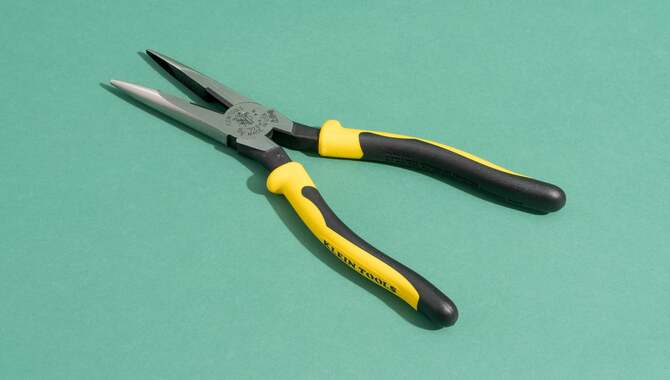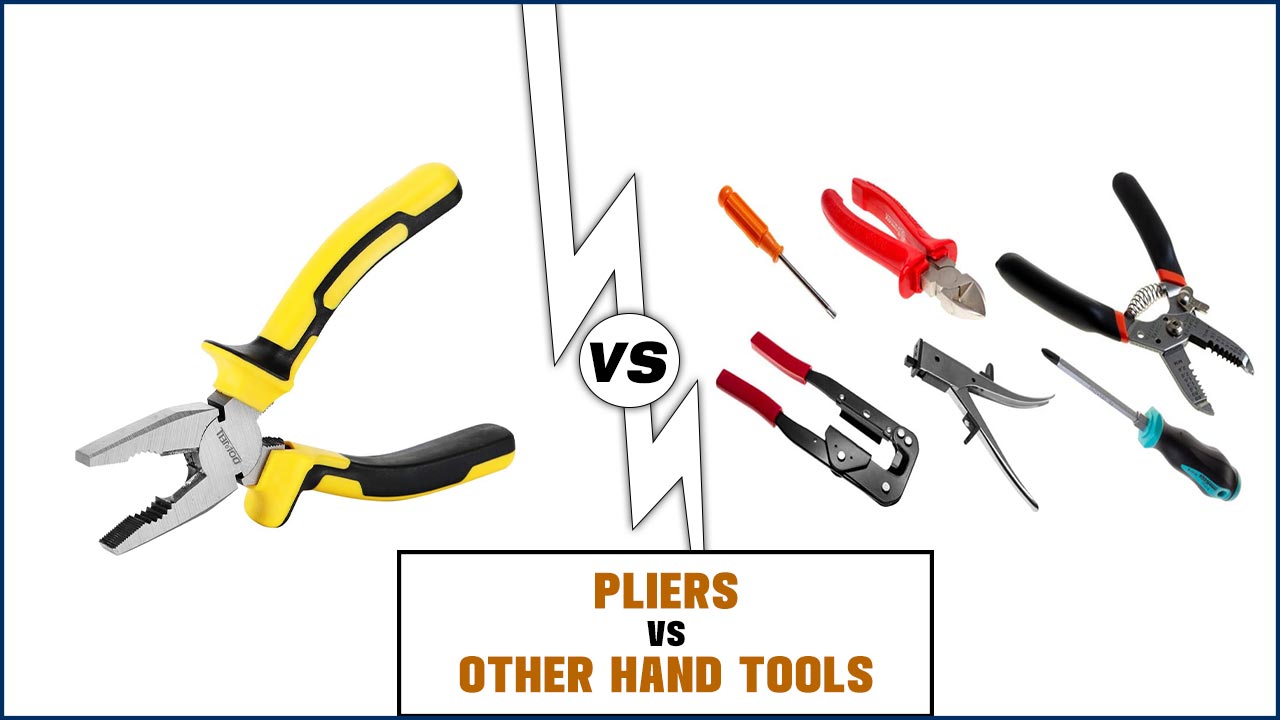Whether you’re a DIYer or professional, linesman pliers are one of the essential tools you’d prefer to have in your home. Starting from electrical work to plundering screw extraction, this finer tool is ideal for different applications.
Not only to cut wire cable, you can also use this product to cut small staples, nails, and even tiny bolts. However, no matter how well you maintain this tool, it is very normal for the linesman pliers to get edgeless. So, how to sharpen Linesman pliers?
Although you can exchange the blunt pliers with a new one, sharpening the old ones can be money-saving. To know-how the process of sharpening a linesman plier, stay tuned till the end!

How To Sharpen Linesman Pliers?

If you don’t use the linesman pliers, no need to sharpen its blades frequently. Following the steps below, you can fine-tune the edges of the blades of your linesman pliers-
Pick up The Suitable Tool

To hone the linesman pliers, you have to choose a suitable tool. What is the condition of your pliers’ blades? Is it slightly corroded or has got rust on its blades or a severe blunt blade?
You can use a file tool, emery board, or knife sharpener for edging purposes based on your tool’s wear condition.
For example, for rough corrosion, you can use Dead Smooth files. And, if the rust is light, an emery board would be enough. But, if the abrasion is there, a knife sharpener or file tool would do great to raze out the nicks.
Ensuring Cleanliness of The Pliers’ Blades

Now, clean the blades of the pliers before starting to sharpen them. If there is rust on the blades, you should use soapy water to wash the blades.
Placing The Pliers

You should be careful while using the sharpener on the blades as you don’t want to cause any damage to the blades further. Here comes the important role of a vice.
Place the pliers handles securely along with the jaws directing upwards. This position will give you full access to the cutting blades.
Though you can still proceed with the below steps while holding the kit in your hand, but we don’t recommend that.
If you do so, small splinters of metal can cause skin injuries. Additionally, a good source of light is also mandatory so that the blades are clearly visible through the operation.
Start Rubbing The Sharpener Tool.

Let’s start the process by choosing any side of one blade. Rub the tool by following it in a diagonal position at quick and short movements.
But, keep in mind that you should not apply too much pressure while doing this. Otherwise, you will end up with misaligned blades by removing excessive metal. Your main target is to raze out burrs and kinks from the pliers’ blades.
To have a constant finishing, you must cover the full surface of the blades while sharpening. The same method applies to both sides of every blade. Keep repeating this step unless you’re sure that there are no nicks left.
Being Careful
Don’t drain out while the operation goes on. Make sure the original angles retain as before while filing. Keep occasionally trying through the process that the jaws of the pliers still close correctly and tightly.
Alternative Way
If you’re looking for a more effortless and quick way to get your pliers to sharpen, then you can do the above-described process with an electric polish tool.
But, in this way, you have to be cautious about not making the borders of the blades much thin. Cause the thinner the edges are, the more breakable they are while cutting hard items.
Also, this will affect the proper closing of the blades, which will make cutting small items harder for you.
Are You Ready To Test The Pliers?

Once you have reached the level of sharpening that you want, it’s time to have a trial of the pliers.
By cutting a piece of wire, you can get an idea of how good the blades are sharpened. If you still feel the blades dull, you can apply the sharpening method all over again.
Final Touch
Now that the blades are all good to go, here comes the finishing step. To extract the metal filings, wash the blades once more in soapy water. Let’s set them to dry thoroughly.
After that, varnish them with a thin coating of oil. Or, you can end up applying rubbing alcohol over the blades and let them sit to dry. And, then you can use or store them as well.
Tips & Tricks

- Only pliers with cutting purposes such as lineman, diagonal and end-cutting pliers need to edge the blades.
- As the linesman pliers blades are comparatively fine and small, applying a coarser file can polish up much material, and smooth files offer you working with precision on the blade.
- While electrical sharpener tools are risky for a novice user, smooth files are risk-free and reasonable as well.
- To prevent rapid rust building and go through the tiresome process of cleaning pliers frequently, you should coat the blades with oil after filing.
- You can clean and coat the blades with oil simultaneously by stabbing the pliers in a mixture of one bag of sand with linseed oil, 3-in-1, or WD-40 oil.
- Always wear safety goggles while sharpening your pliers.
- Do not sharpen damaged pliers, just replace them.
- Choose a dry and safe area to store the pliers.
- If you’re using your linesman pliers for cutting wire very often, then you should choose some older or expensive tools to sharpen the blades frequently over time.
Final Thoughts
Though linesman pliers are sturdy tools, it is very important to take proper care of them if you want the best output from them.
You should execute essential maintenance processes in this workpiece through appropriate usage, cleaning, oil coating, sharpening, and storing.
Additionally, to ensure the effectiveness of the tool and your safety, always remember to apply the linesman pillar correctly wearing adequate glasses and gloves. I hope now you know how to sharpen linesman pliers.





